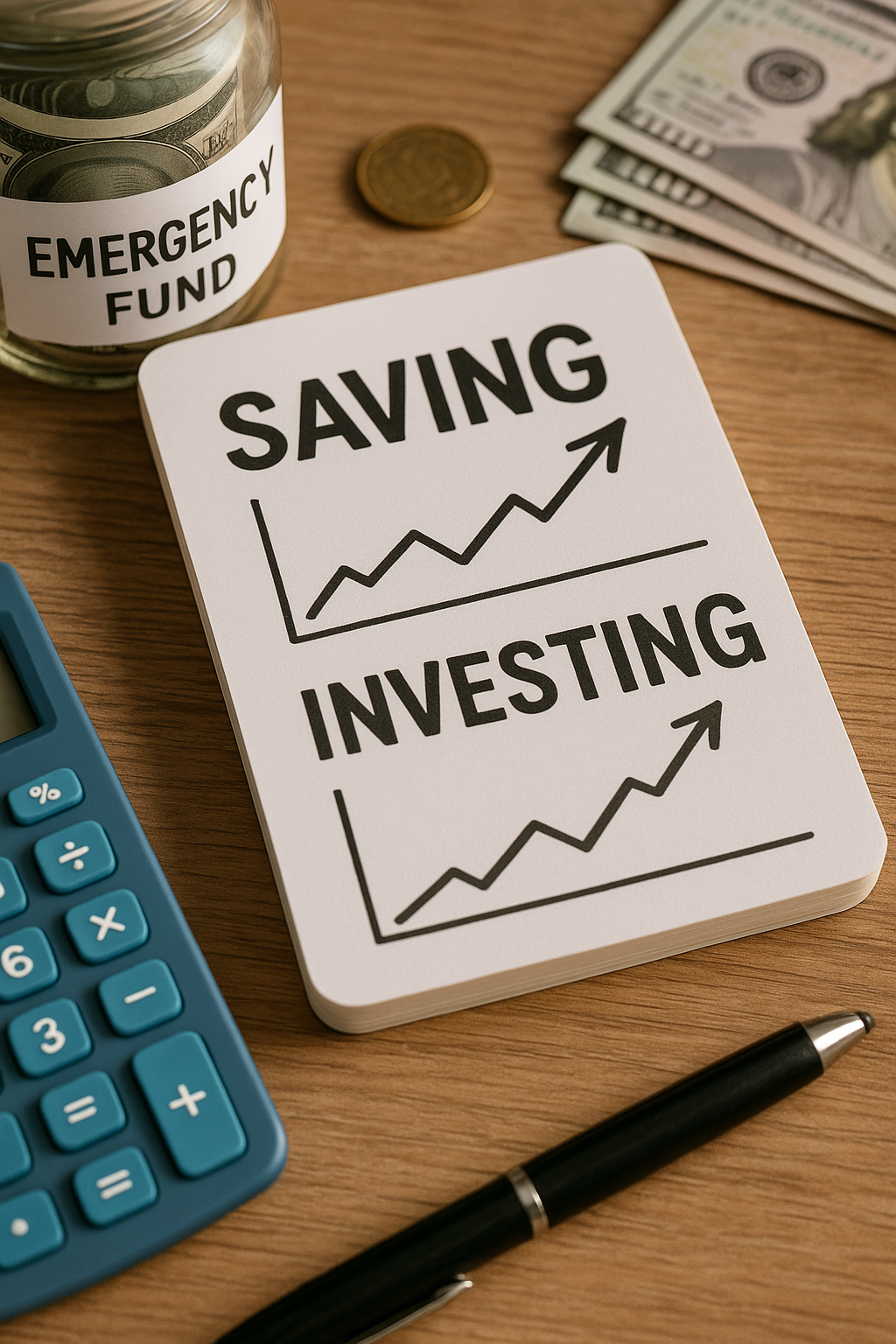Many people use the terms saving and investing interchangeably—but they’re not the same. Each has a unique role in your financial journey, and understanding the difference is essential to building wealth and securing your future.
This article will break down the key distinctions between saving and investing, when to prioritize each one, and how to strike the right balance between them.
What Is Saving?
Saving is setting aside money for short-term needs or emergencies. It’s typically low-risk, low-return, and highly liquid.
Characteristics of saving:
- Safe: Your money doesn’t lose value overnight.
- Accessible: You can withdraw it quickly in emergencies.
- Short-term focus: Used for upcoming expenses or safety nets.
- Stored in: Savings accounts, money market accounts, or CDs.
When to save:
- Building an emergency fund
- Preparing for a large purchase (e.g., car, vacation)
- Saving for short-term goals (under 3 years)
Saving is all about security and stability.
What Is Investing?
Investing means putting your money into assets that have the potential to grow over time—such as stocks, bonds, mutual funds, or real estate.
Characteristics of investing:
- Risk involved: You could lose some or all of your money.
- Higher potential return: Greater rewards for greater risk.
- Long-term focus: Usually 3+ years.
- Stored in: Brokerage accounts, retirement accounts (401(k), IRA), ETFs.
When to invest:
- Saving for retirement
- Building long-term wealth
- Planning for future goals (e.g., buying a house in 5+ years)
Investing is about growth and building wealth over time.
Key Differences at a Glance
| Feature | Saving | Investing |
|---|---|---|
| Risk | Low | Medium to High |
| Returns | Low (0.5–2% annually) | Higher (potentially 5–10% annually) |
| Time Horizon | Short term | Long term |
| Liquidity | Very high | Medium to low (depending on asset) |
| Purpose | Safety and emergencies | Growth and future goals |
| Tools | Bank accounts, CDs | Stocks, ETFs, mutual funds, crypto |
Understanding these distinctions helps you make smarter financial decisions.
Should You Save or Invest First?
The answer depends on your current financial situation. But in general, it’s best to save first, then invest.
Step 1: Build a safety net
- Aim to save 3–6 months of expenses in an emergency fund.
- Use a high-yield savings account for easy access and minimal risk.
Step 2: Pay off high-interest debt
- Credit card debt or payday loans can cost more in interest than you’ll earn from investing.
Step 3: Start investing for long-term goals
- Once you’re financially stable, shift focus to long-term investments like retirement.
It’s not either/or—it’s a timeline.
The Power of Both: Saving + Investing
Using both strategies together is the most powerful approach to financial security and wealth.
Think of it like this:
- Saving is your parachute. It catches you if you fall.
- Investing is your jetpack. It helps you rise above and build the life you want.
When used together:
- You reduce the chances of going into debt during emergencies.
- You build passive income and long-term financial independence.
Common Mistakes to Avoid
- Investing before saving: Without a safety net, you may be forced to sell investments during a downturn.
- Keeping too much in savings: Inflation will slowly reduce the value of idle cash.
- Ignoring retirement: Waiting too long to invest can cost you decades of compound growth.
Balance is key. Don’t wait until you’re “rich” to start investing—and don’t skip the basics of saving in the name of chasing returns.
Tools to Get Started
For saving:
- High-yield savings accounts (Ally, Capital One 360, etc.)
- Automatic transfer tools from checking to savings
- Budgeting apps with savings goals
For investing:
- Robo-advisors (Betterment, Wealthfront)
- Online brokers (Fidelity, Vanguard, Charles Schwab)
- Apps like Acorns or Robinhood (for beginners)
Make it simple. The hardest part is getting started.
Final Thoughts: Know the Role of Each
Both saving and investing are essential parts of your financial toolkit. Knowing when to save and when to invest will help you weather financial storms and grow your money over time.
Start with savings to create a foundation. Then, build on that by investing for your future. It’s not about choosing one or the other—it’s about knowing how and when to use each tool.
